Do have a sailing story, news, or helpful sailing-related information to share?
Please contact P/C Steve Harris to have it included. We’d love to hear from you.
Each week this season, we will offer a “quiz” question regarding the Racing Rules of Sailing. Read the scenario below, formulate your answer, then move your mouse over the box to reveal the correct answer. Need further explanation? Each week this season, we will offer a “quiz” question regarding the Racing Rules of Sailing. Read the scenario below, formulate your answer, then move your mouse over the box to reveal the correct answer. Need further explanation? Blue and Yellow are approaching the leeward mark. Yellow does not give Blue room to round the mark. Blue keeps clear of Yellow. Yellow should take a penalty, since she broke Rule 18.2. Since Blue was overlapped with Yellow when Yellow reached the zone (Remember: overlap is taken from the transom… look carefully), Yellow was required to give mark-room to Blue. This quiz was borrowed from the Inland Lake Yachting Association‘s #FairSailing initiative Each week this season, we will offer a “quiz” question regarding the Racing Rules of Sailing. Read the scenario below, formulate your answer, then move your mouse over the box to reveal the correct answer. Need further explanation? Boats W (a windward boat) and L (a leeward boat) are reaching towards the gybe mark on converging courses. L becomes overlapped with W from clear astern within two of her lengths of W. They are both sailing proper courses and are on a collision course. As they near each other, W hails, “You came from clear astern and I’m on my proper course.” L replies, “I’m on my proper course.” W’s boom then touches L with no damage or injury and both protest. Boat W is penalized under rule 11, On the Same Tack, Overlapped, for failing to keep clear of a leeward boat, and rule 14, Avoiding Contact, for failing to avoid contact when it was reasonably possible to do so. When L first becomes overlapped with W, she is required to give W room to keep clear by rule 15, Acquiring Right of Way, which she does. Because L overlaps W from clear astern within two of her hull lengths, rule 17, On the Same Tack; Proper Course, requires L not to sail above her (L’s) proper course. L is sailing on her proper course (not above it) and W fails to keep clear. Each week this season, we will offer a “quiz” question regarding the Racing Rules of Sailing. Read the scenario below, formulate your answer, then move your mouse over the box to reveal the correct answer. Need further explanation? With 30 seconds to go before the starting signal, Boat P (on port tack) on a beam reach, is approaching Boat S (on starboard tack) who is on a close-hauled course. P proceeds to luff and then cross head to wind all in one motion, ending up to leeward of S. Just after P passes head to wind she holds her course, telling S to keep clear because she is on starboard tack and a leeward boat. S luffs to avoid contact with P and protests. You are on the protest committee; how would you decide this? Boat P is penalized under rule 13, While Tacking. When P passes head to wind, she changes tack from port tack to starboard tack. However, rule 13 states that after a boat passes head to wind, she must keep clear of other boats until she is on a close-hauled course; and before she gets to close-hauled, rules 10, 11 and 12 do not apply. Rule 11, On the Same Tack, Overlapped, is the windward/lee- ward rule. P has not borne away to a close-hauled course when S has to change course to avoid contact; therefore P breaks rule 13. Each week this season, we will offer a “quiz” question regarding the Racing Rules of Sailing. Read the scenario below, formulate your answer, then move your mouse over the box to reveal the correct answer. Need further explanation? Boat P (on port tack) is running downwind and on a parallel course with a dock less than one length away. Boat S (on starboard tack) is fast approaching P from clear astern and hails, “Starboard!” Approximately five seconds later, S makes minor contact with P’s transom (no damage or injury) and protests. Boat P is penalized for breaking rules 10, On Oppo- site Tacks, and rule 14, Avoiding Contact. Though the boats are passing an obstruction (the dock), they are not overlapped, so no part of rule 19.2, Giving Room at an Obstruction, applies. Therefore, although P is clear ahead when she first reaches the obstruction, she gets no protection from rule 19.2 once she and S begin passing the obstruction, and she must therefore keep clear of S under rule 10.Racing Rules Weekly Quiz
something we can discuss on the porch on Sunday.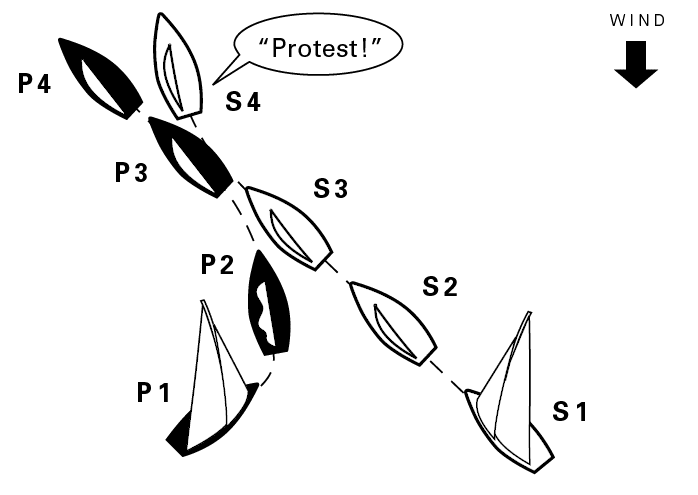
This Week’s Question
Boats P (on port tack) and S (on starboard tack) are beating to windward. P tacks into a position just in front of S. When P reaches a close-hauled course, she is a few feet clear ahead of S. S, who has not needed to change course prior to that moment to avoid P, immediately luffs above a close-hauled course, avoids contact and protests.
You are on the protest committee: how do you decide this?
Answer
S’s protest is dismissed; neither boat breaks a rule. While P is on port tack she is required to keep clear of S by rule 10, On Opposite Tacks. While P is tacking, she is required to keep clear of S from the moment she passes head to wind until she reaches a close-hauled course by rule 13, While Tacking. A boat “keeps clear” if the right-of-way boat can sail her course with no need to take avoiding action (see the definition Keep Clear). S does not need to take any avoiding action before P reaches a close-hauled course.
When P reaches a close-hauled course, rule 13 ceases to apply and P is the right-of-way boat under rule 12, On the Same Tack, Not Overlapped. Because she acquired the right of way by her actions, P is required to give S room to keep clear of her by rule 15, Acquiring Right of Way. S is able to avoid P in a seamanlike way; therefore P complies with rule 15.
This quiz was excerpted from Dave Perry’s 100 Best Racing Rules Quizzes available from US Sailing. For a comprehensive explanation of the rules, read Dave Perry’s Understanding the Racing Rules of Sailing through 2024, which is also available from US Sailing. Permission to reprint this quiz for non commercial use is granted by the author. Racing Rules Weekly Quiz
something we can discuss on the porch on Sunday.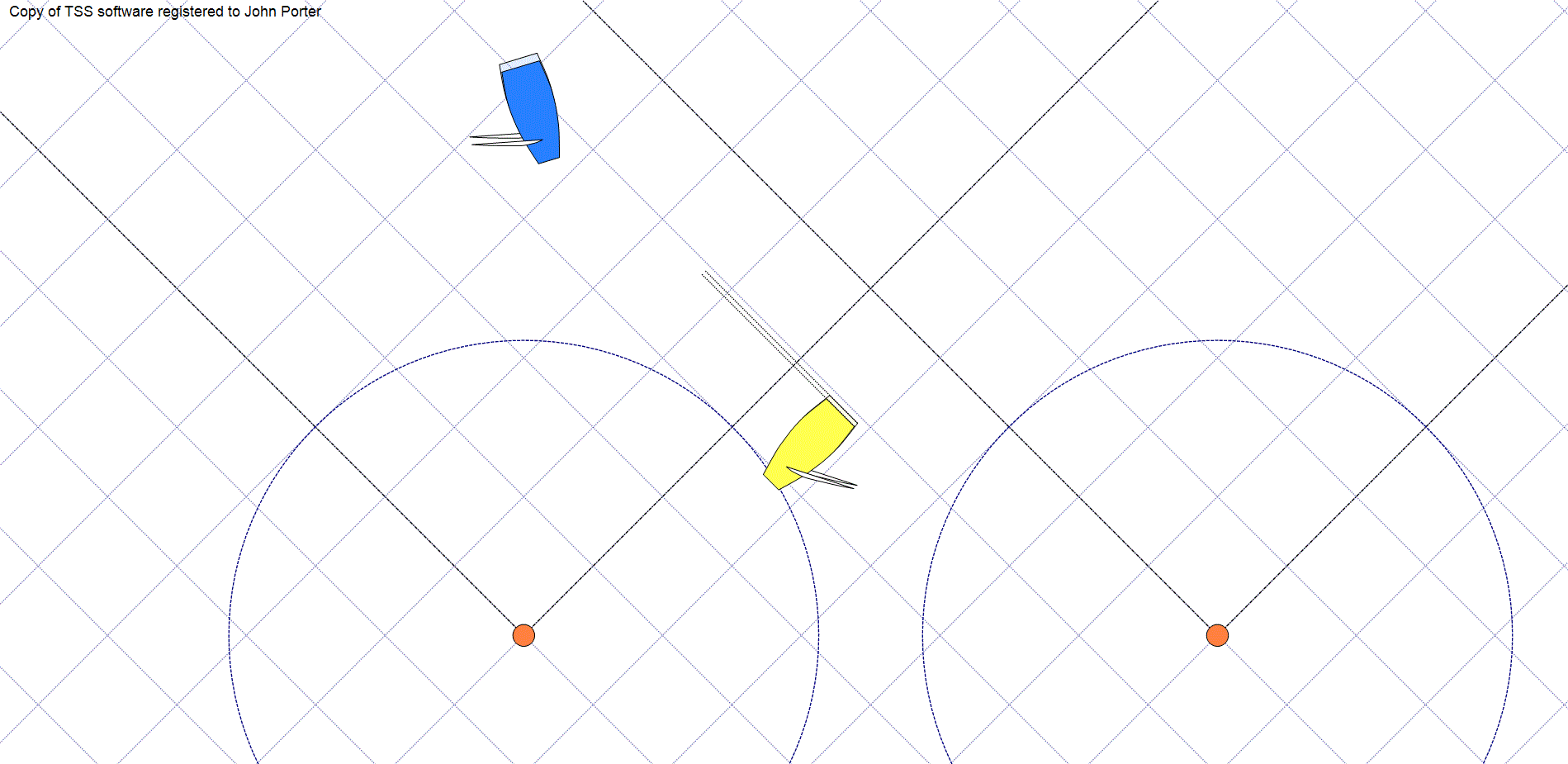
This Week’s Question
Which boat(s) should promptly take a penalty?
Answer
Learn more at sailzing.comRacing Rules Weekly Quiz
something we can discuss on the porch on Sunday.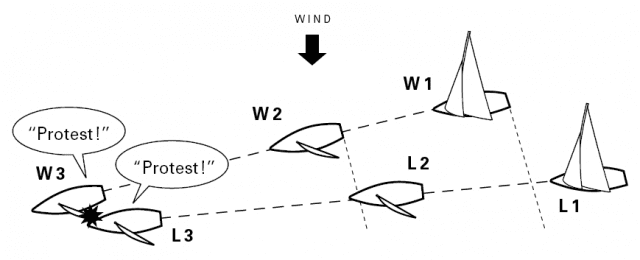
This Week’s Question
You are on the protest committee; how would you decide this?
Answer
L could have avoided making contact with W, but didn’t; therefore she breaks rule 14. But a right-of-way boat is exonerated (freed from penalty) for breaking rule 14 when the contact does not cause damage or injury (see rule 43.1(c), Exoneration).
This quiz was excerpted from Dave Perry’s 100 Best Racing Rules Quizzes available from US Sailing. For a comprehensive explanation of the rules, read Dave Perry’s Understanding the Racing Rules of Sailing through 2024, which is also available from US Sailing. Permission to reprint this quiz for non commercial use is granted by the author.Racing Rules Weekly Quiz
something we can discuss on the porch on Sunday.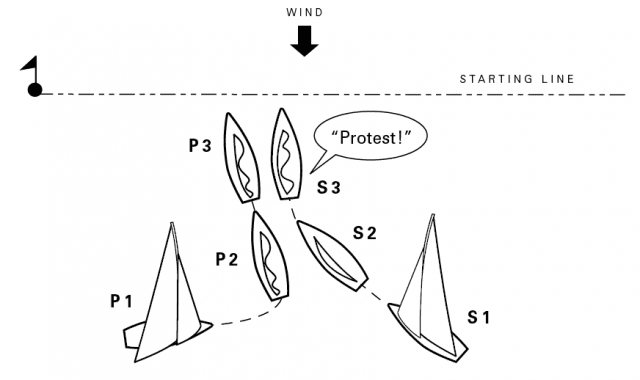
This Week’s Question
You are on the protest committee: how do you decide this?
Answer
This quiz was excerpted from Dave Perry’s 100 Best Racing Rules Quizzes available from US Sailing. For a comprehensive explanation of the rules, read Dave Perry’s Understanding the Racing Rules of Sailing through 2024, which is also available from US Sailing. Permission to reprint this quiz for non commercial use is granted by the author.Racing Rules Weekly Quiz
something we can discuss on the porch on Sunday.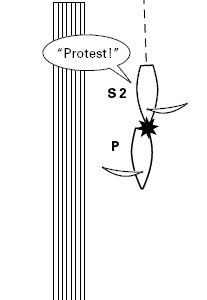
This Week’s Question
You are on the protest committee; how would you decide this?
Answer
Regarding rule 14, it is reasonably possible for P to avoid contact with S by moving out of her way. She fails to do so and breaks rule 14 as a result. It is similarly reasonably possible for S to avoid contact with P, so she also breaks rule 14. However, a right of way boat is exonerated (freed from penalty) by rule 43.1(c), Exoneration, for breaking rule 14 when the contact does not cause damage or injury. In this case it caused neither; therefore S is not penalized.
This quiz was excerpted from Dave Perry’s 100 Best Racing Rules Quizzes available from US Sailing. For a comprehensive explanation of the rules, read Dave Perry’s Understanding the Racing Rules of Sailing through 2024, which is also available from US Sailing. Permission to reprint this quiz for non commercial use is granted by the author.
